Letter to Harmony Korine
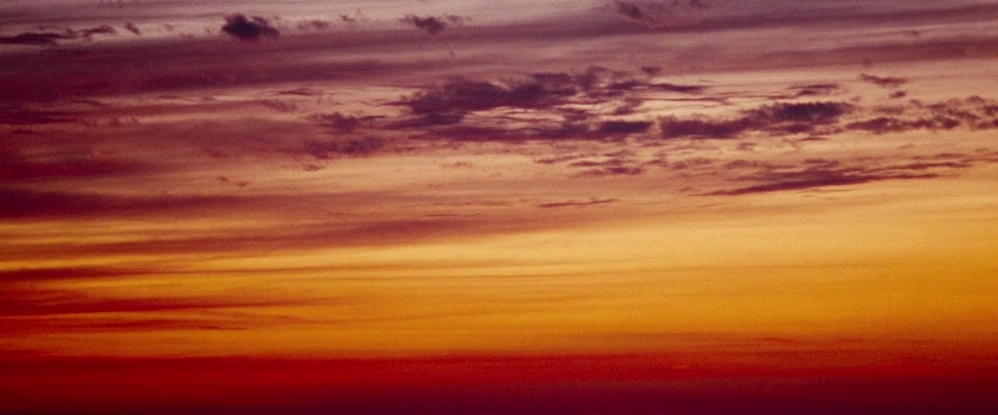
Dear Harmony Korine,
We hope this letter finds you well.
Motives for writing to famous directors are always doomed to be ambiguous at most. How can we present ourselves as being motivated by anything other than the pursuit of sensationalism and froth? The case is even more dubious, for this is one of those open letters, intended for a wide audience but still addressed to one person, in this case – you. Like a collection of ancient love letters, these writings always reach those who are least qualified to read them. A succinct introduction is required.
We are Anton Jaeger and Gerard-Jan Claes. We are currently affiliated to the Belgian website Sabzian.be, which publishes reflections on cinema and maps cinephile events in and around Belgium. One of us (Gerard-Jan) has made several films – Because We Are Visual, Rain, most of them documentaries – and writes about film. The other (Anton) is taking his MPhil in Political Thought, having finished his BA in Philosophy last year. We see ourselves as interested in all things cinematographic, be they art-historical or philosophical, be they from lowbrow or highbrow sources. So much for our ‘credentials’.
As for our motives: those are more questionable indeed. We must first say that they are not primordially moral. We are not looking for an exercise in cultural criticism, or another meditation on Western decay. Our aims in writing this letter are monomaniacally aesthetic. We seek to discuss form, and little else. Our obsessive but nonetheless ambiguous relation to your latest film Spring Breakers, now already three years old, has culminated in a series of questions that, it seems, we cannot keep to ourselves. We are aware of the fact that this ambiguity is at the core of the strategy deployed in Spring Breakers, but nevertheless we are interested in answers and thoughts on your part. We consider Spring Breakers to be an aesthetic provocation, questioning both contemporary cinematography and the deceitfulness of the image in our epoch; a cluster of concepts that, for us, hints at a crucial problem confronting contemporary cinema.
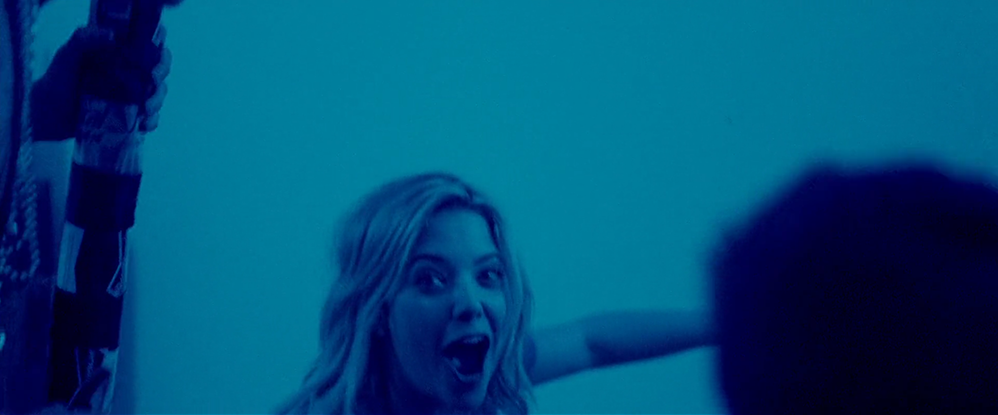
Allow us to elaborate.
In a recent talk at the London Institute for French Culture, serving as an introduction to his latest film Cavalo dinheiro, Portuguese filmmaker Pedro Costa hinted at what is, in his view, the biggest problem confronting contemporary cinema: a global devaluation of the image. “If you look at films from the 1950s and 1960s,” he said, “and you see directors from that epoch capture a scene of running children, or even showing a simple shot of a kitchen, what you see is a bunch of running children and a kitchen.” Nowadays, he notes, you don’t see any of that. Those who make a shot of a kitchen can no longer claim that what they are presenting is a kitchen. The problem has become so acute that even to film an object such as a table has become an impossible task: “When I look at contemporary movies, I don’t see a table,” Costa notes mournfully.
A few weeks ago we watched the beautiful Black Narcissus by Michael Powell and Emeric Pressburger. A part of the voice-over introducing us to a community around a convent in the Himalayas, made us think even more strongly about Costa’s objections:
“The people are like mountain peasants everywhere... simple, independent. They work because they must, they smile when they feel like it... The men are men... no better, no worse than anywhere else. The women are women. The children, children.”
These men, women and children (another beautiful example: ‘the children being children’ in Jean Renoir’s The River) seem to have fled from our images. Attempts today to bring those children and kitchens back, almost always end up surrendering to an unbearable form of art house-kitsch. What we see is a ‘supposed’ kitchen, a ‘kitchen-presumed-to-be’, ‘a-kitchen-assumed-to-be-a-kitchen’, id est, a fake. Of course, this problem is not exclusively cinematographic. One could imagine oneself walking into a newly furnished New York bar, looking at the fanciful interior its owners have chosen for it, immediately getting the sense that everything in here was formatted to make it resemble a typical ‘bar’: we sense the memory of the antecedents, but all we get to see is a vague remnant, a swollen reference. Contemporary cinema seems to be condemned to work with these swollen references.
In a 1964 essay on literary language in post-war Germany, American philosopher George Steiner noted that the true demonic genius of totalitarian power is not to bend the semantic body to its own will. It is not because of the fact that ‘freedom’ becomes the synonym of ‘slavery’, that people submit themselves to such hideous regimes. Not semantic shifts, but linguistic saturation is the true key to total control: words don’t change their meaning in totalitarian regimes, they lose their meaning altogether. It is not that the word ‘freedom’ has come to denote ‘slavery’, but that the word ‘freedom’ can mean anything at all, and therefore simply means nothing. Language has exhausted itself, and in the absence of a reasonable alternative people decide to turn to silence. Mutism is seen as the only viable way out. “I would prefer not to,” as Melville’s Bartleby says.
In our view, a similar saturation has taken place in the world of the image. French film critic Serge Daney put it quite aptly when he declared that the problem is not that there are too many images, but rather that “there are too many images that we’ve seen countless times”. Moreover, as Daney continues, these images are all too easily deciphered, and have lost their capacity to reveal anything substantial. Returning to Costa’s point we ask ourselves: where have all the kitchens gone? Where have all the tables disappeared to?
Like writers and readers require a shared vocabulary of words, cinema requires a shared vocabulary of images. This vocabulary has collapsed, as Costa and Daney record: a table is no longer a table, and we can no longer use it as a syntagmatic building block for our story. Wanting to film a table, to make an image of this table, that in someway connects to a history of the images of this table, we realize that we still don’t see this table. We fully concede that this problem is in no way a recent conundrum in cinematography. As Costa repeatedly declares, “opening a door in a film has always been very difficult, even in the old days”. What has disappeared though, in his view, is the mere ‘existence of things on a screen’. Costa: “Everything existed on the screen. What we mostly see today is a million ways of escaping a confrontation with reality”.
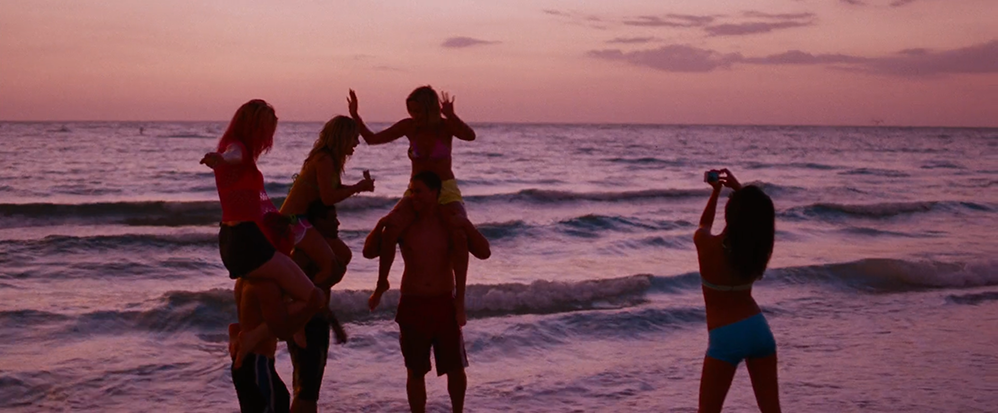
But how to proceed then? Like most contemporary films, we can keep on pretending those images have not desiccated and we can endow them with a false significance. In Nicolas Refn’s Drive we are presented with a lethargic Los Angeles in lurid colours, the home of a ponderous Ryan Gosling. We see bombastic shots of cars speeding over West Coast highways, bathing in the California sun. Nonetheless, these images have ceased to evoke anything. Do we really see a dying woman at the end of Million Dollar Baby? Is Birdman a film about a fading Hollywood actor?
Confronted with the aridity of contemporary cinema, after the passing of ‘things existing on the screen’, the only viable answer seems to be an act of abstinence. Costa’s films themselves bear testimony to this approach. His films flirt with asceticism – they are beautiful journeys to a world of austere imagery. Yet, we cannot accuse Costa of easy nostalgia. His latest instalment, Cavalo dinheiro, opens with a sequence of photos by the American social reformer and journalist Jacob Riis, showing shabby tenements in nineteenth-century New York. The film itself is anchored around the majestic Ventura, also the main character from Costa’s Juventude em marcha, wandering around in the labyrinthine order of his own memories. He relives his old life of serfdom and oppression, while simultaneously playing the young Ventura, ‘the worker’, stranded in Portugal together with many others to work on the construction sites. Costa transposes Ventura’s life, haunted by the roar of history, into nothing less than a mythological trip. Cavalo dinheiro contradicts its time. Our time honours speed, Costa honours slowness and deceleration. Our time honours frivolity and volatility, Costa honours merciless concentration. Our time honours the grotesque, Costa honours the frail and the precarious. In every way possible, Costa’s Cavalo dinheiro is an attempt to reverse this saturation of images and recapture their vitality. Through abstinence and stringency, we retrieve the necessary means to survive.
But do we, really? For all its aesthetic merits, it seems that a repressed element of dishonesty has crept into Cavalo dinheiro. Inevitably, we ask ourselves: where does this dishonesty lie?
Spring Breakers presents us with one of those rare moments in which the deceitfulness of contemporary imagery is taken to its extreme. Here there is no abstinence or nostalgia. There are no exalted proletarians (or ‘aristocrats’, in Thom Andersen’s phrase), no black-and-white daguerreotypes of New York City streets. Spring Breakers self-consciously rejects all of this. Not that it is unique in this respect: multiple films share a ‘contemporaneous’ mainstream outlook (‘style’, if you want) and start from the given of modern mass culture. A new film starring Zac Efron seeks to explore the world of middle-class rave music, building on the inherent tensions between the commercial and the artistic that come with such a world (‘We Are Your Friends’). The newest instalment in the Mad Max-franchise takes our society’s bombast at face value and lays bare its already more than overt death drive (‘What A Lovely Day’). The Joker in The Dark Knight presents us with the very pinnacle of diabolic nihilism, representing a solipsistic evil foreshadowing ISIS-beheadings and ritual burnings (‘Why So Serious?’). Yet, Spring Breakers seems to be one of the only movies that self-consciously proceeds to this act of affirmation. It is, however, not an extended hip-hop music video starring Gucci Mane with his entourage, sipping cough syrup. It is not an anthropological treatise of the kind we see on English news channels, hysterically reporting about young Brits wreaking havoc on islands in the Spanish Mediterranean. It is not a twenty-first century version of A Clockwork Orange, glorifying cheap and cheerful violence for its own sake. It is none of this. Spring Breakers escapes the usually inescapable pitfalls of art house-kitsch by consciously saying no to any form of expected grandiloquence. It embraces the deceitful image, as something that is to be cherished instead of loathed.
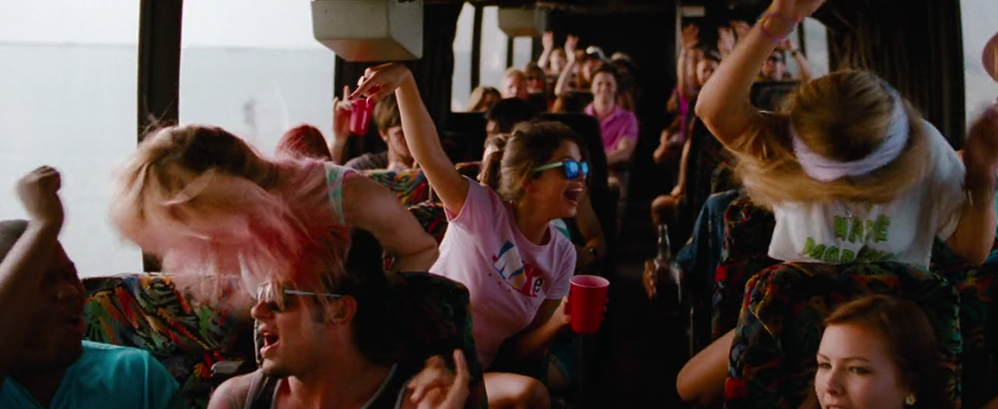
How are we to account for this approach? In interviews you regularly mentioned that the film came into being by collecting all kinds of imagery surrounding the act of ‘spring breaking’: teenagers going wild, drinking and taking drugs in the ultimate act of beach debauchery. This imagery, you stated, was originally used as a source of inspiration for your paintings and other artworks. Strictly speaking, the starting point for Spring Breakers was the disposition of these images. You always stressed the fact that it was not your intention to make an essay or a documentary summary of that world. You were looking for something more impressionistic, like a poetic act of reinterpretation: “I just thought of it as a nice backdrop.” But this is not all. More is going on. As the girls relentlessly assure each other during the course of the film: “Just pretend you’re in a videogame. Act like you’re in a movie or something”. We can thus safely say that the film conceptualizes its own form. It sets its own format. The ‘liquid narrative’ could be seen as a fun drug trip, a recycling of the hedonistic energy, condensing the ultimate spring break experience. Unsurprisingly, people have variously declared the movie to be provocative, violent, vulgar and superficial, a trip into the moral void at the heart of postmodernity. Others, mostly younger people, who were expecting a film comparable to The Hangover-series, left the theatre utterly confused. This is understandable. Many viewers probably expected the death of the girls, but in the end there’s no obligatory tragic or happy ending.
After arriving in the spring break resort, Faith (Selena Gomez) dreams aloud: “You know what would be really cool? If we could freeze life. Like, if we could just click it and freeze it and say, “This is the way it’s going to be forever.” Like having this moment together forever.” Spring break is presented as a magical and spiritual place. Many of us do not believe that it truly is so. But what if it is a magical place? What if this phenomenon that at first sight appears so banal, actually does deliver a substantial experience? “This is more than just spring break. This is our chance to see something different.” If there are only clichés and formatted images to work with, why not embrace this?
Spring Breakers wages this embrace. Not that we expect it. When Spring Breakers itself reaches its midpoint as a film, and the three female protagonists decide to head for the coast to indulge in their famed beach bacchanals, the viewer expects to finally ‘get the message’. We expect to get into the kernel of the movie, its final Hollywoodian core, where we are all told that these girls ‘have been living a dream’, that their journey has only been a beguiled illusion and that we are now to be informed about the dangers of this very illusion. ‘Living the dream’ – ‘it’s a lie, people, don’t believe it, they have been fooling themselves all along’. We expect moralism – we even crave it in a certain sense – but here, moralism never comes. We never get to the movie’s kernel, its final Hollywoodian core. There is no such thing as the film’s core. There is no such thing as its kernel. Surface is all there is. We expect to be told – as is Alice at the end of her odyssey down the rabbit hole – that ‘it was all a dream’. This moment, however, never takes place in Spring Breakers: the dream merely continues, and it is in this continuation that it seeks its liberation. ‘Living the dream’ is the lie that is real, that has become real. There’s no escapism, because it seems there’s no escaping it. As Faith speaks again:
“Hi, Grandma. Having so much fun here. This place is special. I’m starting to think this is the most spiritual place I’ve ever been. I think we found ourselves here. We finally got to see some other parts of the world. We saw some beautiful things here. God, I can’t believe how many new friends we made. Friends from all over the place, I mean, everyone was so sweet here. So warm and friendly. It’s way more than just having a good time. God, it was so nice to get a break from reality for a little while. I’ll always remember this trip. I want to go back again next year with you. Something so amazing. Magical. Something so beautiful. Feels as if the world is perfect. Like it’s never gonna end.”
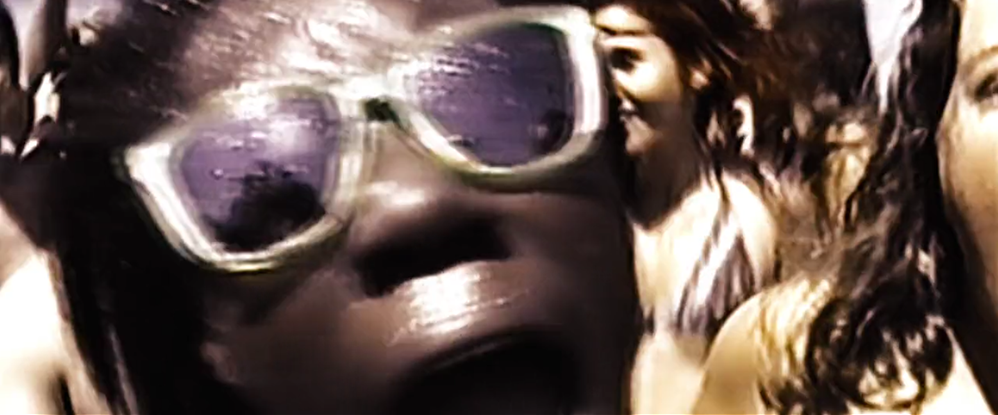
We are not asking for your manifesto. We are not asking for your ethical project. We write in a way scientists would write to a fellow colleague who has made an important discovery, asking how this discovery was made. We have noted your reluctance to impart details of your ethical drive behind the creation of Spring Breakers in other interviews. This is not what we are asking; rather we would like to understand the aesthetic drive behind your work. We present two questions for rumination:
Does Costa’s problem constitute a genuine difficulty for contemporary cinema in your view?
This is utterly important to us. We have a strong intuition that the issue of saturation, or the passing of ‘things existing on the screen’, is at the very core of the method deployed in Spring Breakers. We suspect that it is part of a more intricate strategy. We wonder if you are with Costa on the issue, and if your total surrender to surface is a conscious act.
What is really at stake in Spring Breakers?
We fully admit to being fascinated with your film. We praise its daring aesthetic choices, together with its unwillingness to make pseudo-aesthetic compromises. But we also have doubts and reservations. As mentioned above, we do not want to join the choir of voices asking for your ‘intentions’ in making this movie, desperately craving for an exegesis of its supposed ‘secret message’. We agree that these are fruitless pursuits. Spring Breakers escapes every moralistic category, in spite of what some critics have claimed. Yet moralism is not the same as morality. In many ways, Spring Breakers is a fiercely moral film, and all aesthetic choices preceding its creation are destined to be moral in character. Here your position seems to be schizophrenic nevertheless. There’s a vague sense of a purely conceptual ‘bravoure’, a sense of the form coming to the fore and being placed on a pedestal. Yet – why bring this form to the fore? The film almost becomes didactic in that sense: it was preceded by a moral choice to show these images, these girls and these songs. They were not chosen unintentionally. Yet, we see no criticism of this choice. As the creator of this work you are clearly seduced by the imagery of spring breaks and the corresponding world of decadence, but why is this seduction legitimate material for an aesthetic piece? How is the film more than a mere amplified recycling of this world? What is this abstraction dislocating? We ask the question because we can’t isolate the dislocation either.
We sincerely hope that these questions are not taken as though they are simply disinterested footnotes. For us, they constitute genuine problems and relate to fundamental obstacles we encounter. There is a great deal in your film that appeals to us and much that continues to be a mystery. As this letter has been attempt at unfolding parts of it, if only for ourselves, we eagerly await your answer.
Sincerely,
Gerard-Jan Claes & Anton Jaeger
Images (1), (2), (3), (4) and (5) from Spring Breakers (Harmony Korine, 2012)